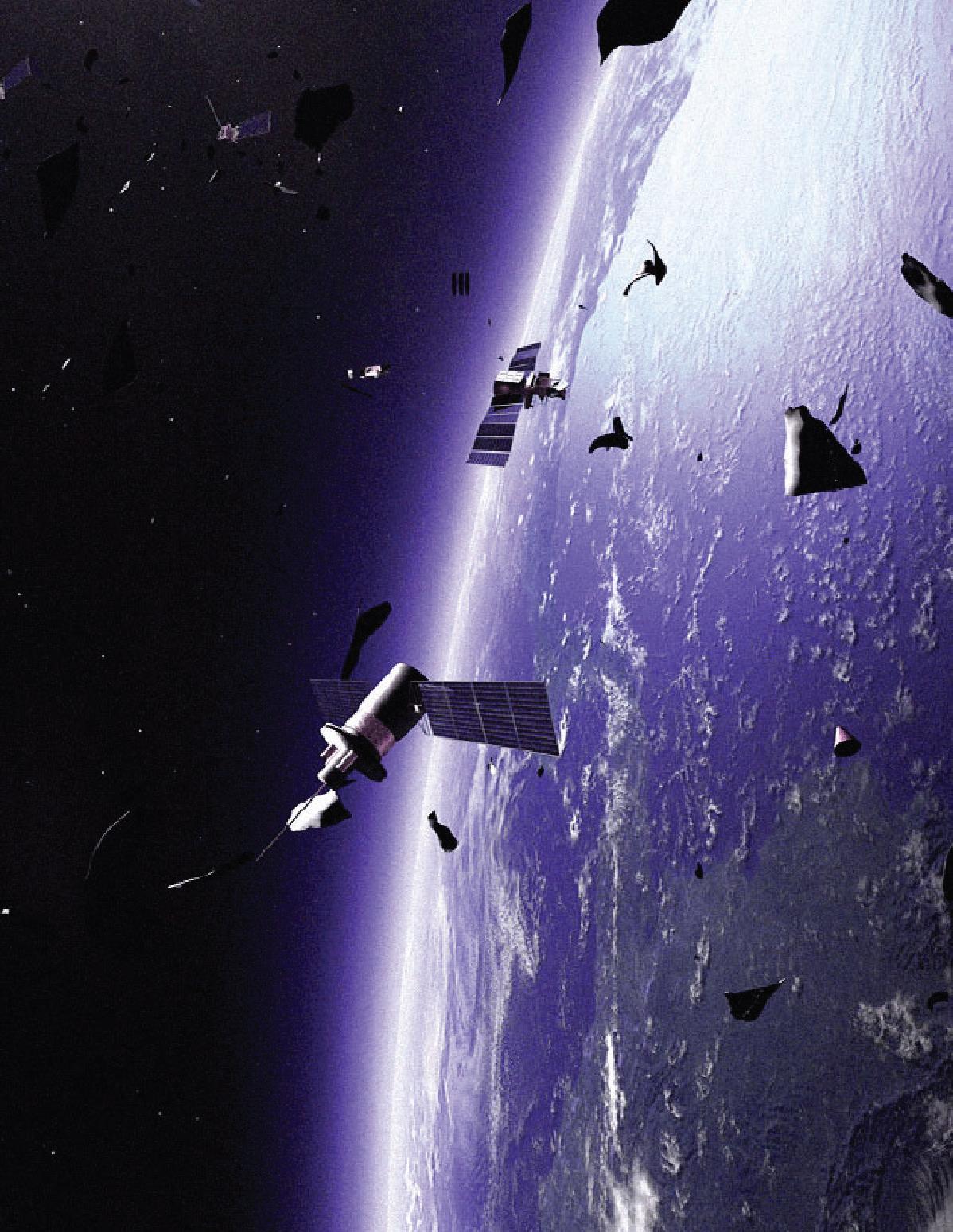

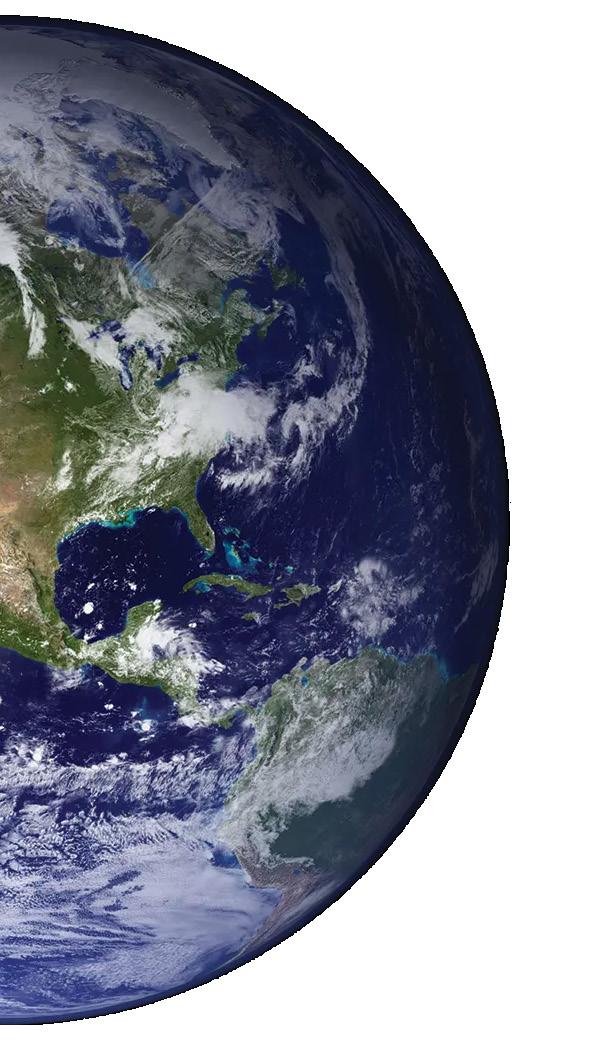













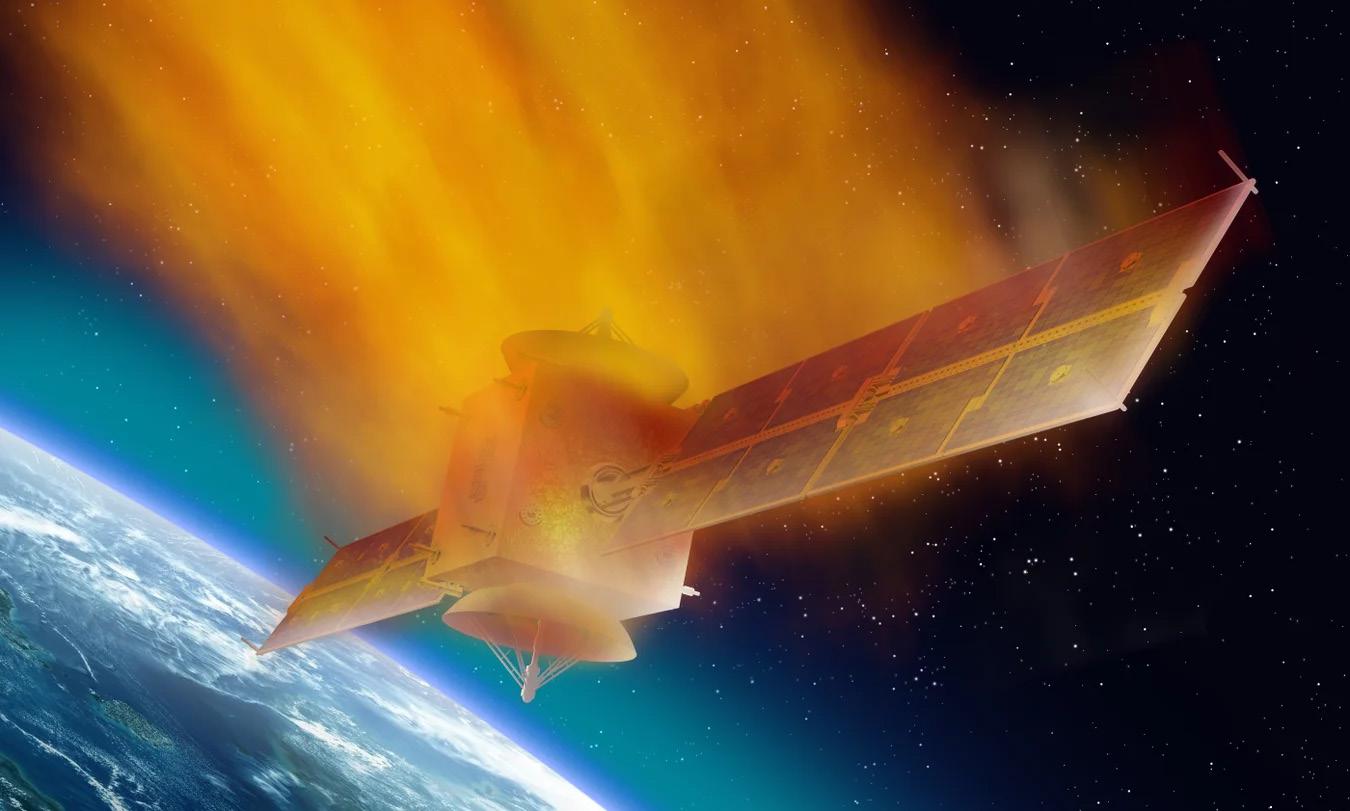


















Humanity’s messy fingerprints, from disposable grocery bags adrift in the deepest oceanic trenches to microplastic-laced snowfall on the tallest mountaintops, litter Earth— and each contaminant poses potential environmental hazards that remain poorly understood. Now scientists have found another
pollutant to worry about: vaporized metals from burned-up space junk that are floating around in Earth’s stratosphere, the same atmospheric region that holds our planet’s fragile, protective ozone layer. In a series of high-altitude research flights over Alaska and the U.S. Midwest in March and April, researchers
sampled stratospheric air using specialized mass spectrometers. They discovered surprising amounts of many metals commonly used in rockets and satellites, often in ratios mirroring those found in specific highperformance aerospace alloys. The investigation revealed that the metals are accumulating within sulfuric acid
“Answers won’t come easily but will be essential for properly assessing what risks, if any, humankind’s ongoing expansion into space poses for life down on Earth.”
particles, which constitute most of the stratosphere’s particulates and influence our world’s ozone layer and climate. Although only about 10 percent of the sampled sulfuric acid particles contained spacecraftsourced metals, the researchers forecast that value could grow to 50 percent or more in the coming decades because of skyrocketing numbers of launches and satellites. The work was sponsored by the National Oceanic and Atmospheric Administration, and a paper reporting the findings appeared in the Proceedings of the National Academy of Sciences USA on October 16.
To date, most modeling of reentering space junk has focused on whether any pieces will endure to threaten bystanders on the ground, says Daniel Murphy, the study’s lead author and a research chemist at NOAA’s Chemical Sciences Laboratory in Boulder, Colo. Earlier researchers “didn’t think a lot about what happens to things that vaporize during reentry. Of course they can’t disappear. They’ve got to go somewhere,” Murphy says. “And now with these measurements, we know where they go. They go into particles in the stratosphere.”
A link between the metals and spacecraft reentry is indisputable, says study co-author Daniel Cziczo, an atmospheric scientist at Purdue University. The results can’t be explained by pollution from rocket launches or aircraft passing through the stratosphere, which yield particles with very different sizes and chemical signatures. Nor can they be ascribed to ground-based industrial processes such as metal smelting, which also produce distinctively different particles that are limited to lower altitudes. “What we are seeing is due to reentry of material—a mixture of burned-up meteors and spacecraft, which slowly coagulates to form particles that settle through the
atmosphere,” he says. Small traces of lithium were the first eye-catching anomaly in the high-altitude flight data, Murphy says, followed by high concentrations of aluminum that far exceeded the abundance found in meteoric space dust. “What really clinched it [was observations of] niobium and hafnium, both of which are really exotic. You absolutely don’t expect to find them in the stratosphere,” he says.
The ultimate impacts of spacecraftsourced metals upon Earth’s climate and habitability remain unclear.
What is clear is that this metallic pollution is set to accelerate in years to come as the numbers of rocket launches and atmospheric reentries continue to grow. Thanks in large part to proliferating plans for satellite “mega constellations” such as SpaceX’s Starlink and Amazon’s Project Kuiper, the global launch industry is on track to loft as many as 50,000 new satellites into orbit by 2030. And it doesn’t take a rocket scientist to realize that most of what goes up must come down—in this case as showers of fiery debris pumping more metals into the stratosphere. “With all these launches, the amount of material vaporizing during reentry could become roughly comparable to the amount of meteoritic material coming in. And it’s different stuff, a different mix of metals,” Murphy says. “When you have potentially 50,000 satellites in orbit, and they have a five-year lifetime, that’s 10,000 reentries a year—something like 30 a day. That is very different than the situation in the past, and that’s one of the things that is really changing.”
“It’s uncomfortable not knowing whether or not it’s a problem,” Murphy says. “How important is it? Maybe it is not completely important. Or maybe it’s really important. It’s [something] people haven’t, as yet, thought very much about.”
“Among an undetermined future, one thing remains certain: the story of space debris is just beginning.”
On an ideal night for stargazing--under clear skies free from light pollution--the human eye unaided can see thousands of bright stars, meteor showers and even the Milky Way. It may even spot a decommissioned satellite or two—just a micro-fraction of the many pieces of space debris contributing to the congestion of Earth’s orbit.
Space debris, or more colloquially known as space junk, is considered to be any human-made object in orbit not serving a useful purpose and typically is a result of space vehicles no longer in service. The objects that fit this classification greatly range in size, from old spacecraft and the rocket stages that launched them to micro-debris like flecks of paint. Currently, about 25,000 space debris objects are large enough to be tracked and cataloged, but when accounting for the miniscule pieces—lens covers, peeling insulation, or the fragments and shards produced from “breakup events” like colliding objects or explosions—that number rises to the millions. When factoring the velocity of orbit, almost all debris within the space environment can pose as a
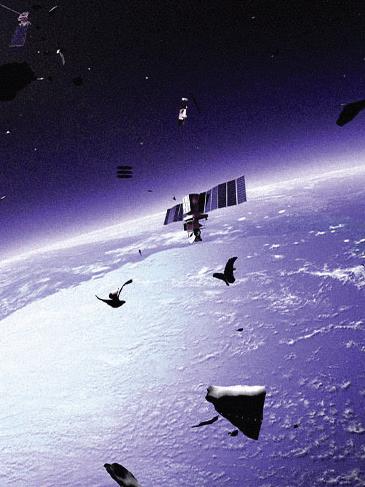

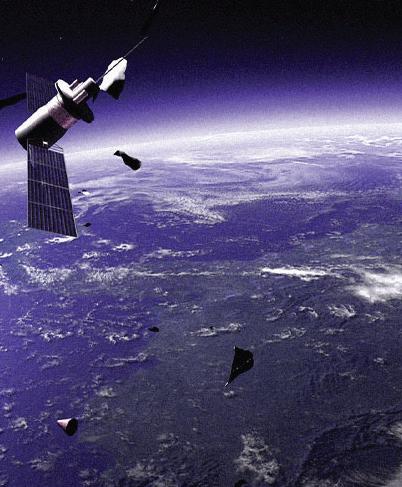


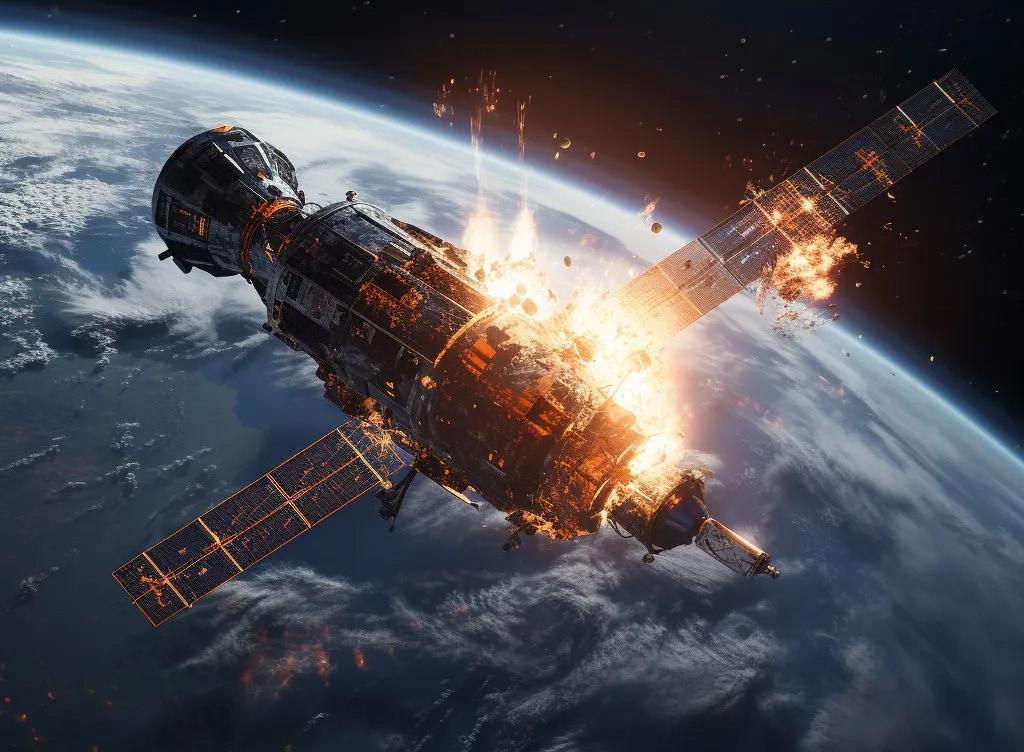
Historically, breakups have been the largest contributors to the fragmentary space debris population, with ASAT tests among the largest single events. Millions of lethal but nontrackable particles can be a consequence of explosive breakups or ASAT tests. For example, the Ariane 1 breakup in 1986 created nearly 500 trackable pieces and the 1996 Pegasus/HAPS breakup generated over 750 trackable fragments. For every trackable fragment, models suggest tens to hundreds of non-trackable fragments exist and the number of this debris type increases in quantity as the fragment size diminishes.
A relatively rapid sequence of debris events in the late 2000s resulted in questions from U.S. government leaders about debris and the risk it could present to spacecraft. Events like the Chinese FY1C ASAT test in 2007, which added more than 3,500 trackable pieces, and the 2009 Iridium 33 satellite collision with the Russian Cosmos 2251 satellite that brought about more than 2,300 pieces of debris gave a tremendous push to efforts surrounding collision prevention and debris cleanup.
In response to the 2007 Chinese ASAT test, Aerospace created the Debris Analysis Response Team (DART). Comprised of expertise ranging from trajectory reconstruction algorithms to hypervelocity collision modeling, the team provides a unified operational immediate risk analysis to active satellites among

debris fields. For longer-term analysis, the Aerospace Debris Environment Projection Tool (ADEPT) is used to examine the future population and operations environment to predict effects of operations practices and policies. In more recent years, there has been a significant capability change for tracking debris and sorting out new mass launches of low Earth orbit (LEO) constellations.
“A combination of academic curiosity and the need for intelligence gathering continued to drive the United States in its desire to understand this new and unfamiliar frontier.”
The US. Space Force’s Space Fence has become operational, a radar system that is an improvement from a hardware and software perspective, and the 18th Space Defense Squadron has adopted prototype tools born from an Aerospace-supported research effort on uncorrelated tracks (UCTs). As the name suggests, a UCT is when a satellite trajectory does not correspond to any item in the Space Object Catalog.
In recent years there has been a change in the space operations environment as large “NewSpace” constellations such as Starlink and OneWeb have begun to launch, and commercial operations have exceeded government and military activity. This can be illustrated by the change in debris to spacecraft ratio: 75% vs. 25% in 2016 and now 62% vs. 38%. The rapid addition of active spacecraft is shifting the mix of spacecraft and debris. LEO is becoming rapidly more congested, and the need for space traffic management is becoming acute to prevent collisions and new space debris. In 2018, Space Policy Directive 3 called for the creation of a civil space traffic management organization, and a transfer of safety responsibility from the military.
As a result of the rising number of launches from military, civil and commercial actors, collision avoidance support is becoming a key component of launch and orbit operations. Although colliding with space debris is a low-probability event, the uptick of spacecraft is narrowing launch windows and creating new operational challenges. With this frontier becoming increasingly congested and contested, it is becoming more important than ever to address questions surrounding space sustainability, including developing
capabilities to prevent and remove orbital debris. Fortunately, recent missions like RemoveDEBRIS[1] and ELSA-d[2] and space companies such as Astroscale[3] and ClearSpace[4] are actively advancing debris removal technology and solutions.
Furthermore, ultimately securing a sustainable space environment for the future will require collaboration and cooperation among government, commercial and international stakeholders across the space enterprise.
“If the space enterprise is careful with its practices and takes actions now to understand, prevent, and clean up debris, the impact can be minimized and the preservation of freedom of operations in space can be maintained.”
Among an undetermined future, one thing remains certain: the story of space debris is just beginning.



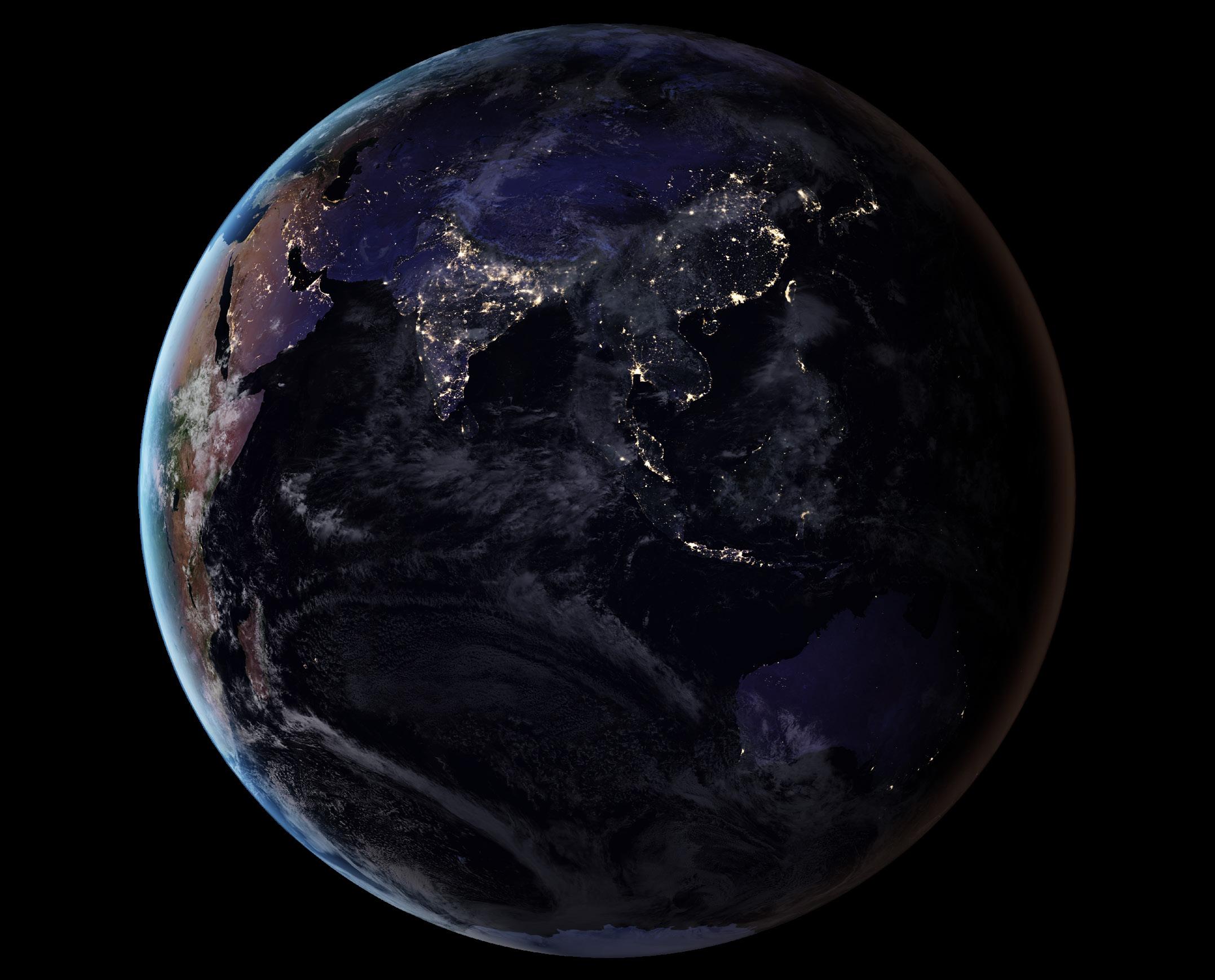
This image of Asia and Australia at night is a composite assembled from data acquired by the Suomi NPP satellite in April and October 2012. The new data

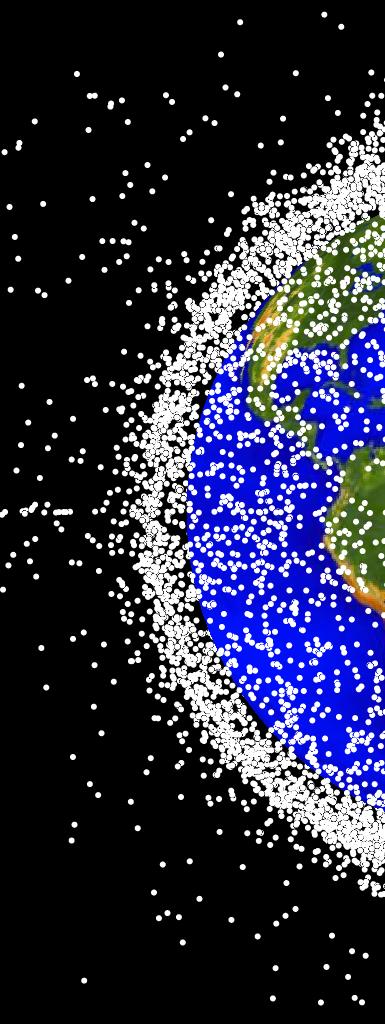
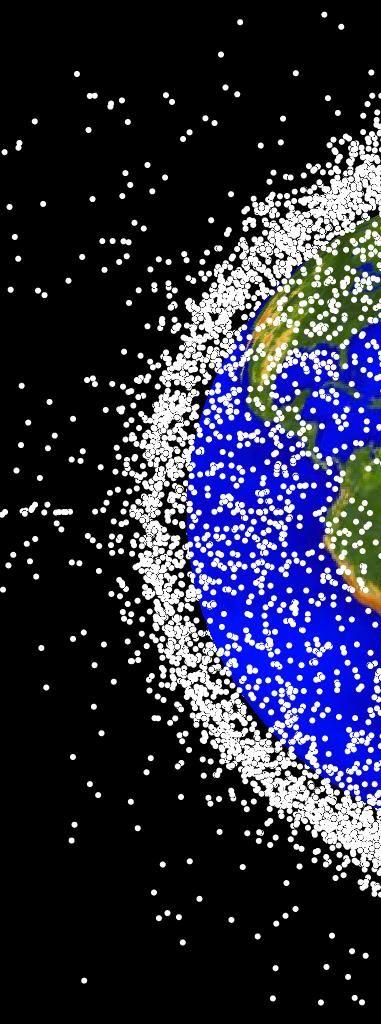

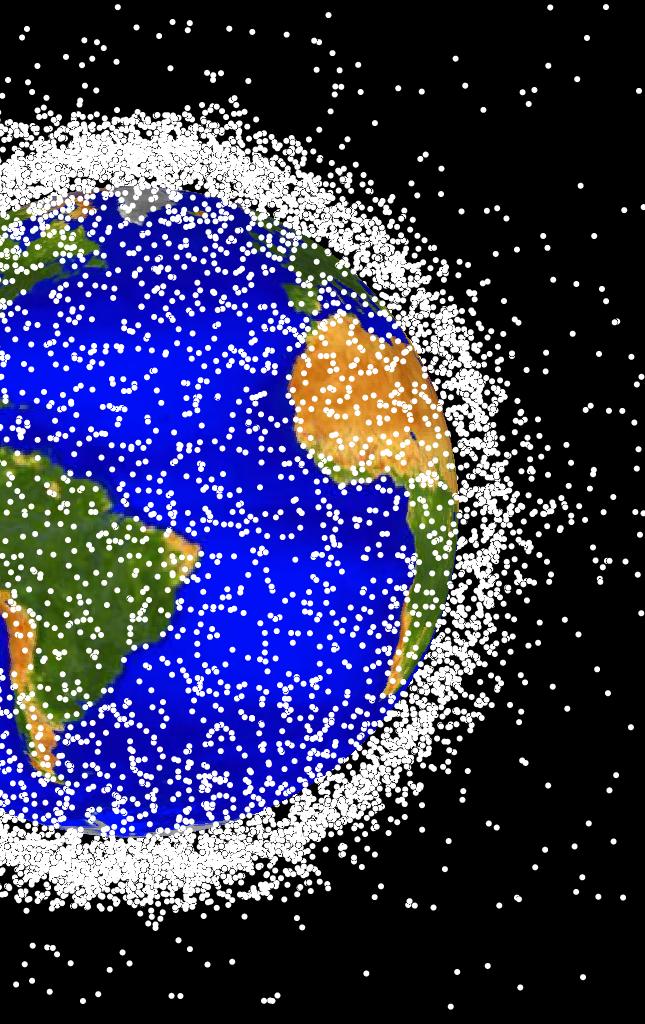
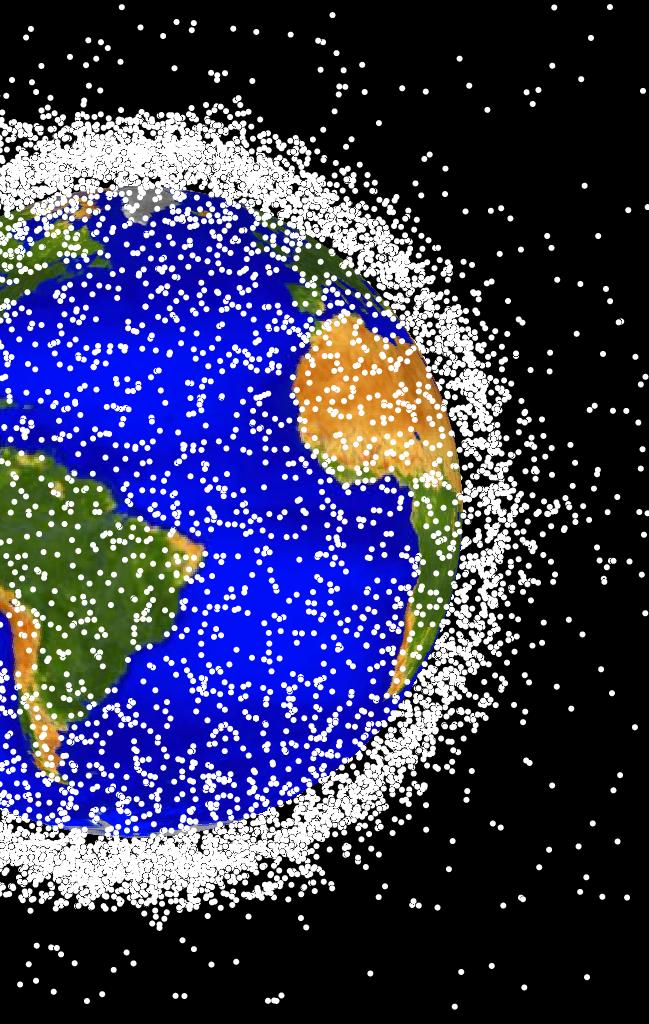



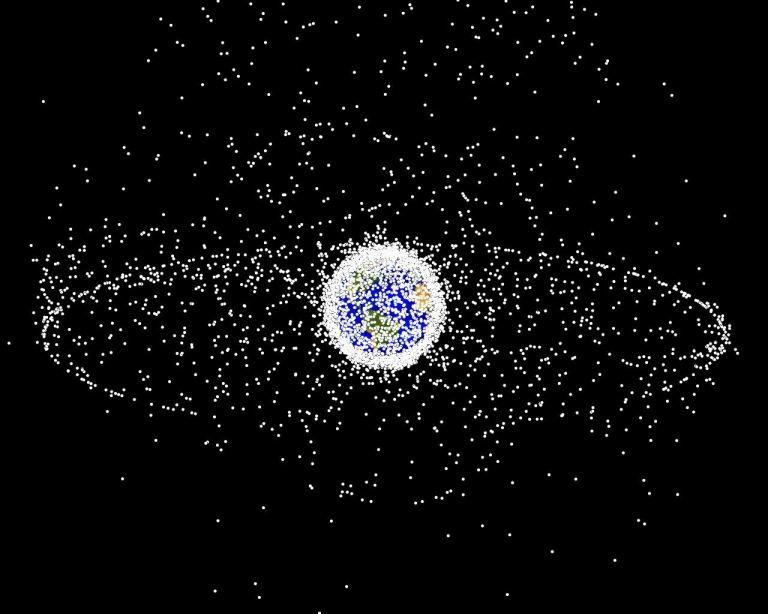

Astronauts aboard the International Space Station were forced to take shelter in a pair of space capsules Monday morning after a cloud of space debris threatened to pass near the orbiting outpost. Mission controllers are closely monitoring the debris and advised the astronauts to seek refuge in the event that a collision would force them to undock from the space station immediately and return to Earth. NASA did not specify what caused the debris field, but the State Department confirmed Monday that a Russian weapons test that intentionally destroyed a Soviet-era satellite created more than 1,500 fragments of space junk in orbit.
Secretary of State Antony Blinken said the test “clearly demonstrate that Russia, despite its claims of opposing the weaponization of outer space, is willing to jeopardize the long-term sustainability of outer space and imperil the exploration and use of outer space by all nations through its reckless and irresponsible behavior.”
Russia confirmed it had conducted the test, but rejected any suggestion it had posed a danger to the astronauts. “The U.S. knows for certain that the resulting fragments, in terms of test time and orbital
By Denise Chow & Andrea Mitchell
parameters, did not and will not pose a threat to orbital stations, spacecraft and space activities,” Moscow’s defense ministry said Tuesday. During the emergency maneuver, NASA astronauts Tom Marshburn, Raja Chari and Kayla Barron, along with Matthias Maurer of the European Space Agency, sheltered in their Crew Dragon spacecraft, while Russian cosmonauts Anton Shkaplerov, Pyotr Dubrov, and NASA astronaut Mark Vande Hei sheltered in their Soyuz capsule.
The crew members later emerged from their spacecraft, but mission controllers advised them to keep some hatches between the main space station modules closed as a precaution. NASA said the space station is passing through or near the debris field every 90 minutes, and agency officials will continue to assess the situation.
NASA Administrator Bill Nelson called the incident “unconscionable,” adding that the satellite fragments threaten the lives of all astronauts living and working in space, including the seven individuals at the International Space Station and three crew members aboard China’s Tiangong space station. He said that the explosion like created hundreds of thousands of pieces of debris less than three inches in diameter in addition to the larger, trackable pieces of debris.

In a statement late Monday, Nelson said he was outraged by Russia’s actions. “With its long and storied history in human spaceflight, it is unthinkable that Russia would endanger not only the American and international partner astronauts on the ISS, but also their own cosmonauts,” he said. U.S. Army Gen. James Dickinson, commander of the United States Space Command, also condemned the anti-satellite test, saying the resulting debris “will continue to pose a threat to activities in outer space for years to come.”
“Russia has demonstrated a deliberate disregard for the security, safety, stability, and long-term sustainability of the space domain for all nations,” Dickinson said in a statement. “Space activities underpin our way of life and this kind of behavior is simply irresponsible.”
“We hoped for a relationship with Russia that is more stable and more predictable,” he said. “But hope is not a strategy and we are going to watch very closely as the Russian Federation chooses its actions in the coming days and weeks.” The Department of Defense regularly tracks more than 27,000 pieces of space junk, including approximately 23,000 objects larger than a softball. Over the course of the space station’s history, NASA has had to perform more than 25 special maneuvers to dodge orbital debris that passed too close to the orbiting outpost.
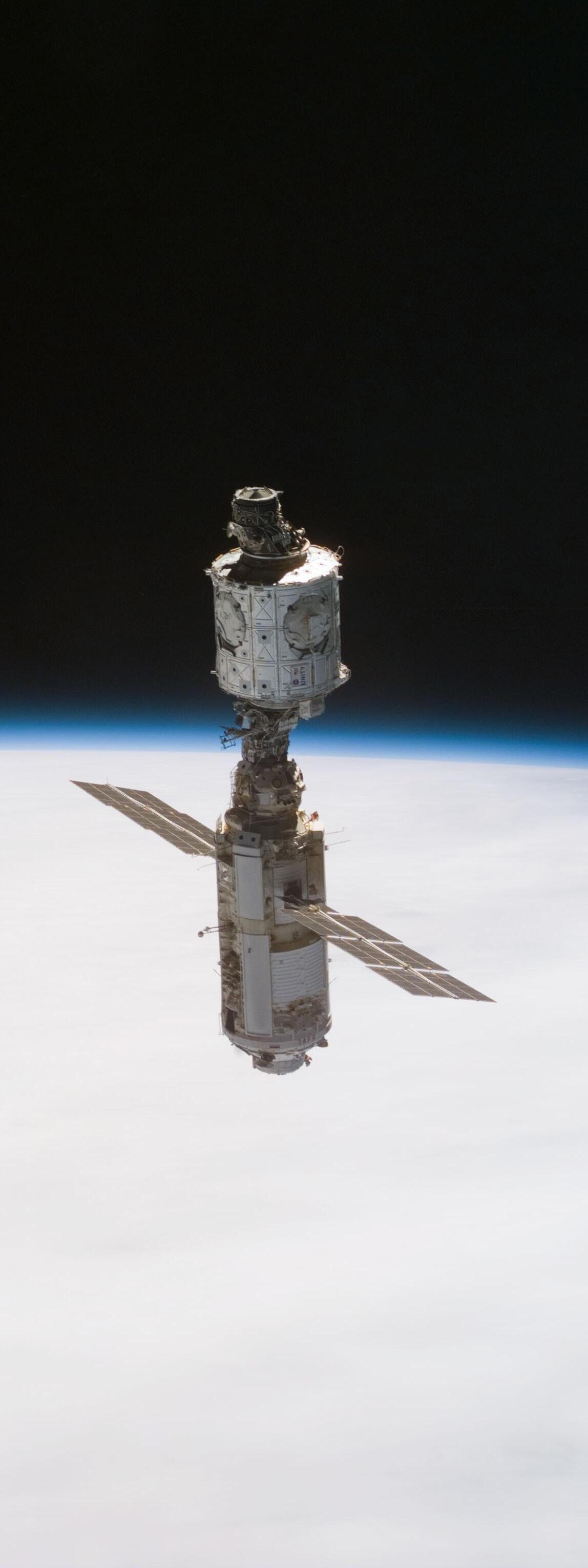
Who is responsible for creating space debris? Tracking it? Controlling it?
The nations that launch and operate satellites are responsible for the space debris from their satellites and rocket bodies. There is no one responsible for tracking it internationally, but the United States does track space debris to protect our own satellites, and we share some of that information with the rest of the world. Other nations also have tracking capabilities and perform similar services for their satellites. Satellite operators try to reduce space debris from recently launched satellites and rocket bodies by carefully designing them to prevent explosions, reentering them, or moving them to disposal orbits— essentially a space junkyard— when their mission is over. Space debris from older objects, explosions, and collisions is not controlled at all.
A launch view of the NanoRacks-Remove Debris satellite taken by the International Space Station’s Expedition Photo Credit: NASA
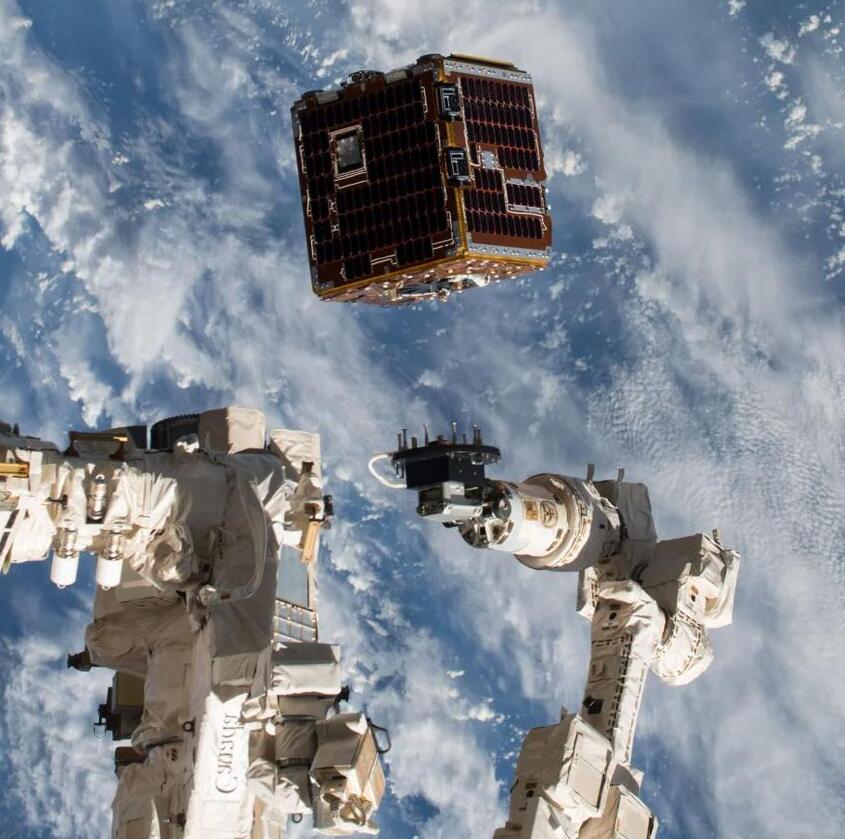
11 May 2024

 Photo Credits: NASA
Photo Credits: NASA
What is an on-orbit collision like? It looks more like an explosion of each object, as if they passed through each other and exploded on the other side. A hyper-velocity collision like those at orbital speed doesn’t behave like collisions that we are used to seeing. The objects are moving so fast that they travel through each other faster than the shock waves can travel. The shock waves in the structures of each object then shatter them into fragments of varying sizes and, in the process, give each fragment a boost in a different direction. Each one of these fragments is then in a different orbit than the original object and will move away according to the laws of orbital motion. With thousands of fragments, each moving in slightly different directions, it looks a lot like an explosion.
Isn’t there an “air traffic control” in space? Doesn’t NASA do that? There is no way to control objects that are inactive. In addition, there is no way to control objects that may still be active but are unable to maneuver— such as the Hubble Space Telescope. And finally, even when we have a satellite that can maneuver, it’s not like air traffic control telling an airplane to climb, descend, or turn. A satellite coasting in an orbit adheres to the laws of physics and unless there is ample warning time, it can take a lot of energy to alter that orbit to avoid a collision.
Are the astronauts at risk of being hit by space debris? What can NASA do about it? Astronauts are at risk in the International Space Station and during extra-vehicular activities (spacewalks). Their suits can protect them from extremely small particles and most of the ISS has shields to protect them from objects with sizes up to one cm in diameter. To protect them from larger objects, the Space Station must navigate out of the way or the astronauts can use the auxiliary Soyuz spacecraft as a “lifeboat.”
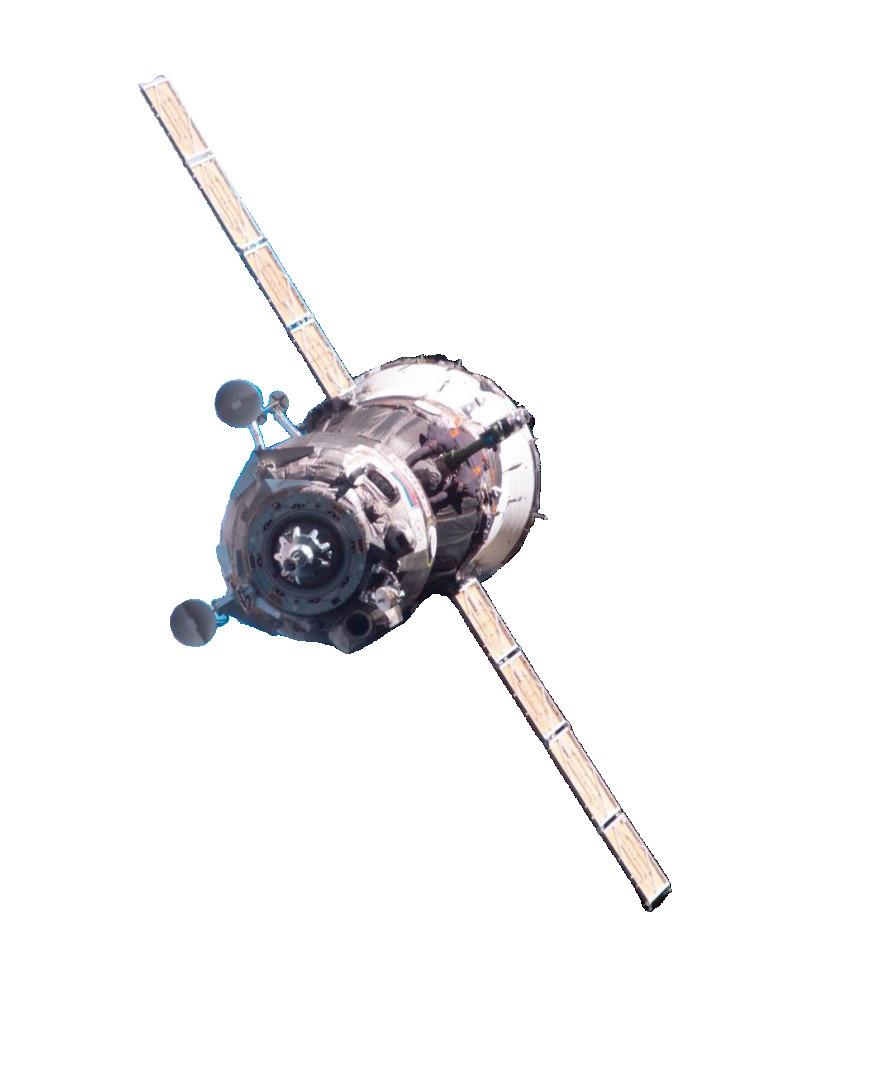
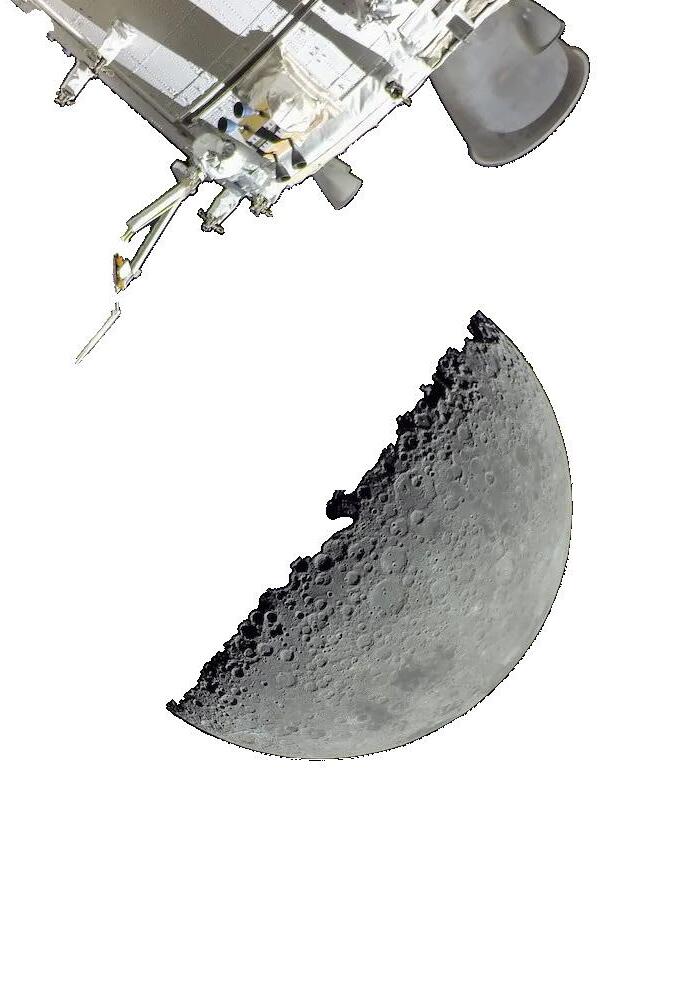
Are chain-reaction collisions or cascades real?
Unfortunately, yes. Mathematical modeling has repeatedly shown that the number of objects in low Earth orbit will likely grow from collisions, whether or not we launch more space missions. However, these cascades take place over decades and centuries, with a large collision happening currently only about once every five to ten years. So while the “Kessler Syndrome” — a scenario where space debris collisions cause a domino-effect resulting in an overwhelming amount of debris — is quite real mathematically, it is a slowmotion disaster that we have time to affect. If we start limiting the growth of space debris right now, we can prevent it from being an unmanageable problem.

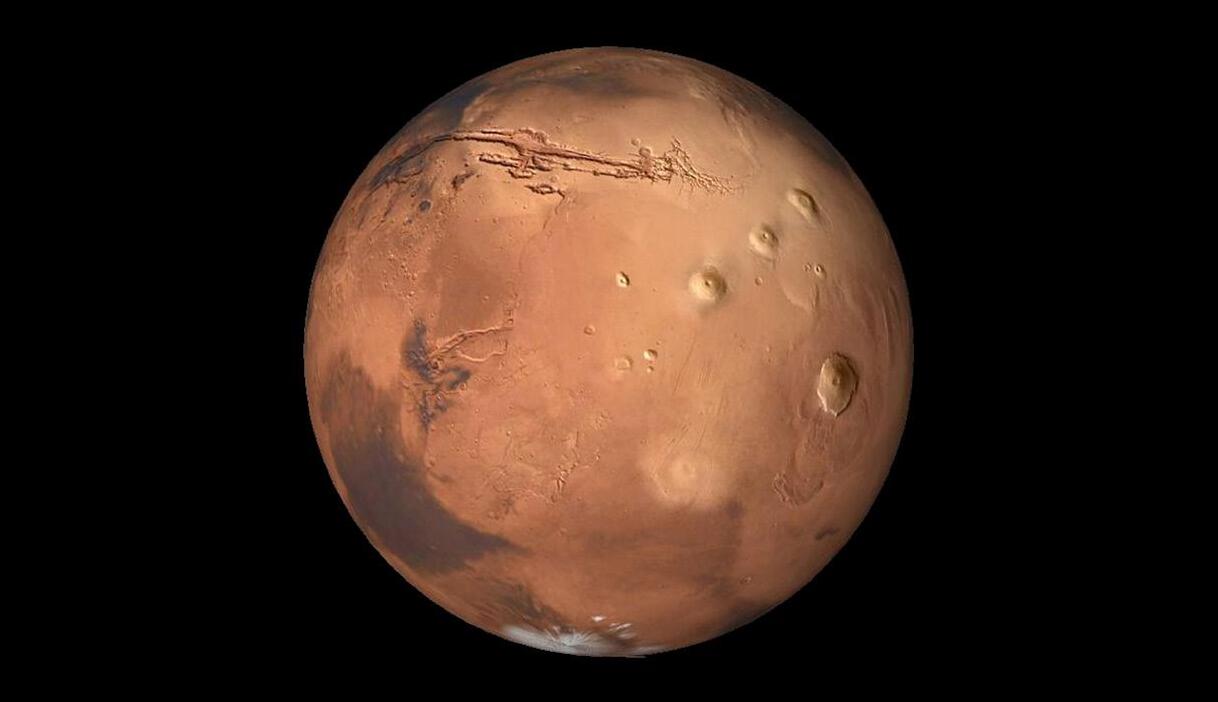
How can we clean up the space debris?
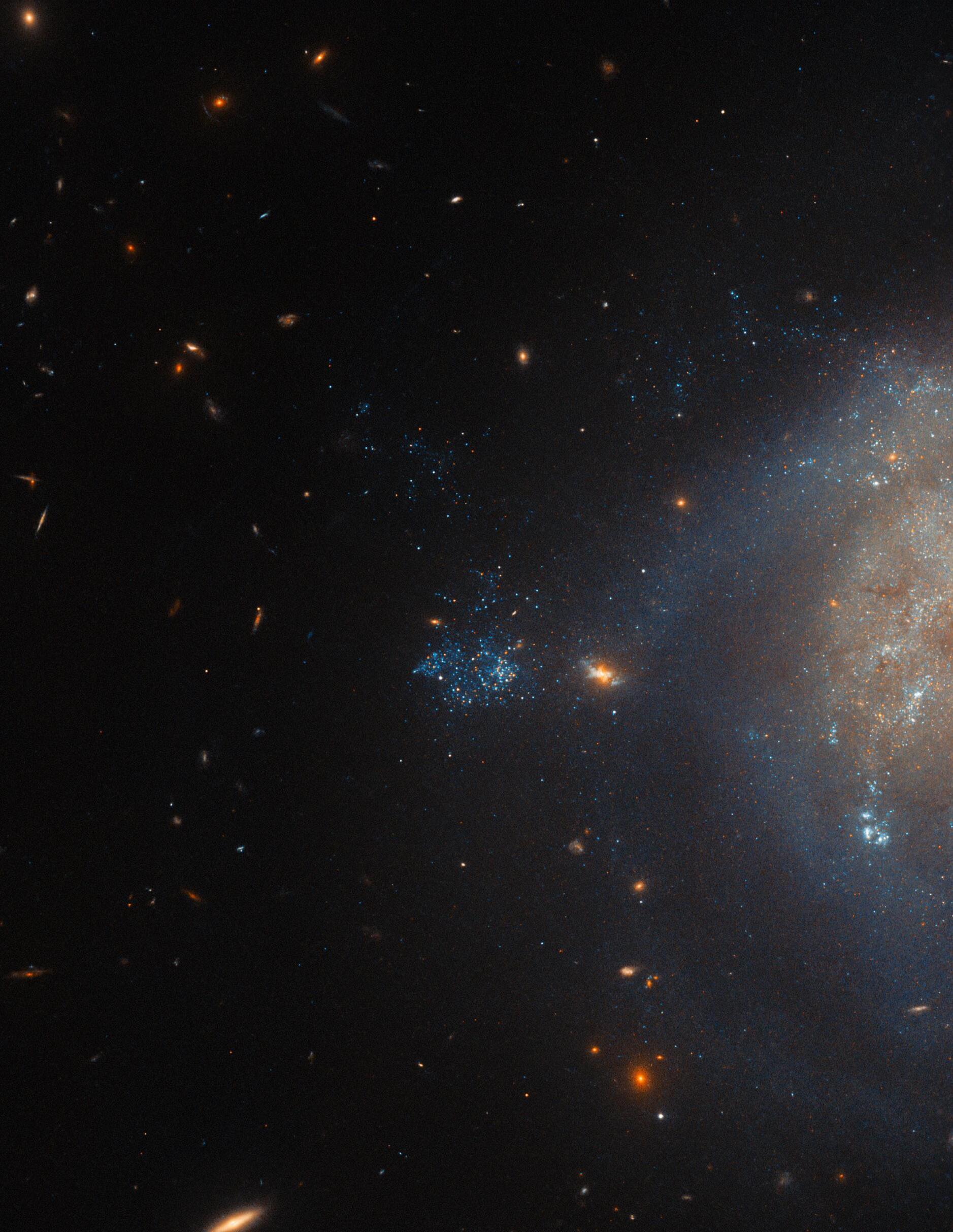
What is a reentry and is it good or bad?
A reentry is when a man-made object in space comes back into the thicker atmosphere. There are two kinds of reentry: controlled and uncontrolled. A controlled reentry is where the object uses a motor burn to put it on a specific trajectory designed to reenter at a known location — usually over an ocean so that parts that don’t burn up land in a safe area. As the name suggests, this kind of reentry can only be done if you have control over the object. Uncontrolled reentries occur when atmospheric drag slowly causes an object’s orbit to get so low that the increased drag at lower altitudes causes it to make the final plunge to Earth. This can occur anywhere along the orbit, and we don’t know where the reentry will occur or where debris will land. Generally, reentries are good because they reduce the debris population. A reentry can be bad if it causes damage or injury — fortunately, this rarely happens.
We can’t just vacuum or sweep it up into a space garbage truck. To remove space debris, particularly the large and more dangerous objects, we have to get close to it and maintain the same speed as each object. We then, somehow, must attach to it, and move it into a lower orbit or reenter it directly into the ocean. If the object is a rocket stage with propellant still on-board, there is an explosion risk and that’s why we would never let astronauts perform this task. There is also the issue of property rights; you can’t grab a satellite or rocket that belongs to another country without their permission. There is no easy way to control the smallbut-dangerous objects that are not well tracked or not tracked at all. They have more kinetic energy than bullets, and they are moving ten times faster. It is hard to catch a bullet, especially if you don’t want to create more junk while doing it.

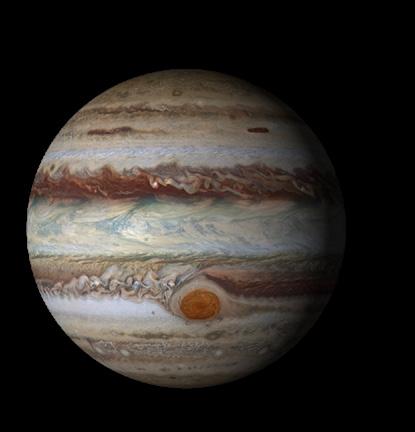
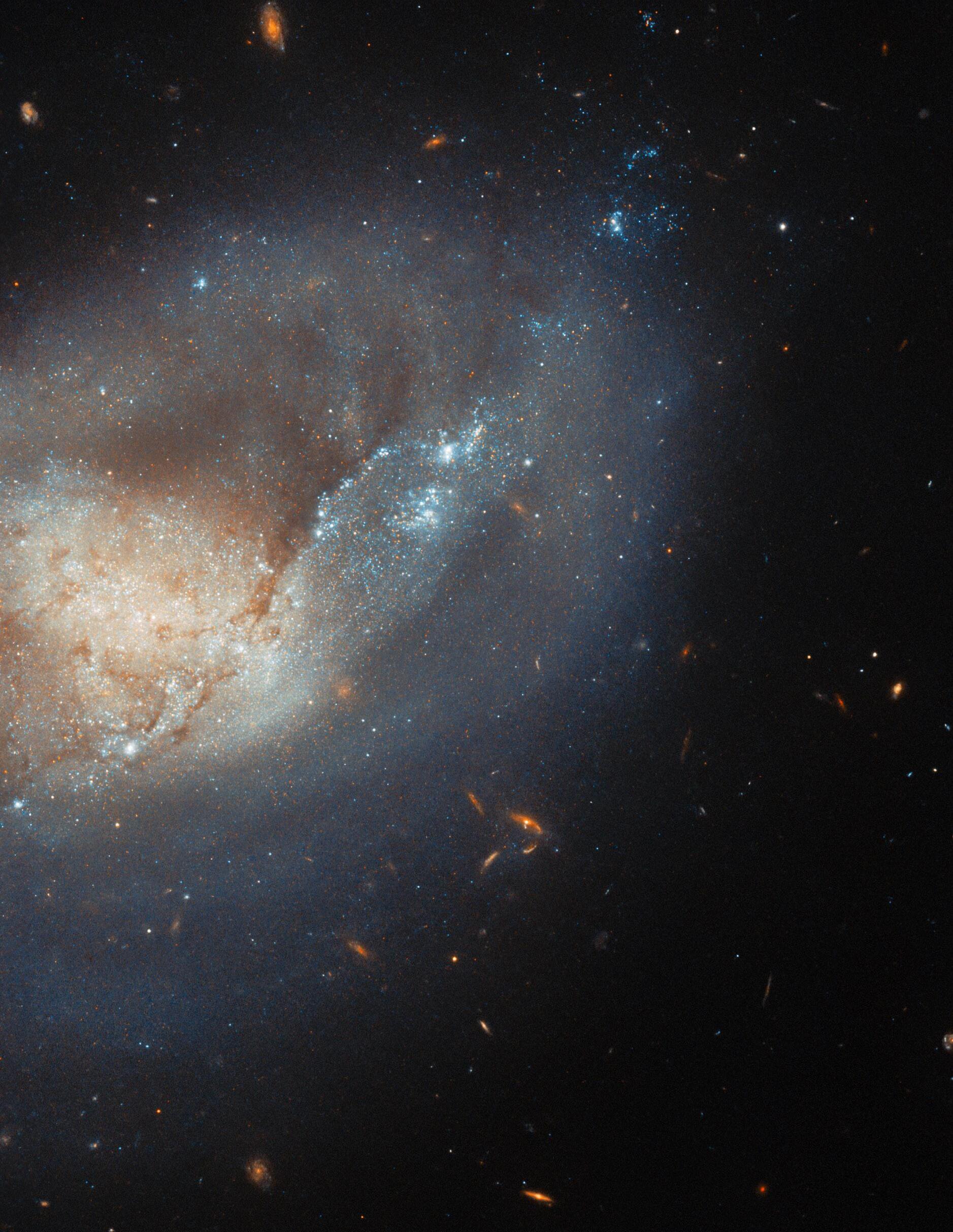
“The objects are moving so fast that they travel through each other faster than the shock waves can travel... With thousands of fragments, each moving in slightly different directions, it looks a lot like an explosion.”
What is an on-orbit collision like? It looks more like an explosion of each object, as if they passed through each other and exploded on the other side. A hyper-velocity collision like those at orbital speed doesn’t behave like collisions that we are used to seeing. The objects are moving so fast that they travel through each other faster than the shock waves can travel. The shock waves in the structures of each object then shatter them into fragments of varying sizes and, in the process, give each fragment a boost in a different direction. Each one of these fragments is then in a different orbit than the original object and will move away according to the laws of orbital motion. With thousands of fragments, each moving in slightly different directions, it looks a lot like an explosion.
Space debris – Where does it come from?
Space debris is anything in orbit that is man-made and is no longer in use. Space debris includes old, inactive satellites, rocket stages, and other discarded hardware such as instrument covers or separation bolts. It also includes fragments of vehicles that exploded or collided, and debris that is shed off of satellites such as bits of insulation and paint. Generally, the smaller the debris is the more abundant it is.
How small and how large is space debris?
Space debris can be as big as a large rocket body down to microscopic particles that are barely visible. The ones that we are most worried about are those larger than 3 mm (BB sized), although even impacts of very small debris can gradually degrade a solar panel or ruin a scientific instrument.
If most debris is too small to be seen, then how do we know about it?
Some radar installations can see small objects pass through their beams, but can’t track them long enough to determine their orbit. We can determine the approximate amount of small space debris by counting these radar returns over a short period of time and then estimating the total. In addition, whenever we retrieve a spacecraft from orbit, we find that it is almost always pitted with debris strikes. Generally, the longer something has been in orbit the more hits it has. Collecting this type of data from multiple sources allows us to estimate the total number of objects in orbit. We can also estimate the number of particles created by collisions and explosions using models that simulate the breakup.
What is the risk to people on the ground?
The overall risk to an individual from reentering debris is extremely small compared to the other hazards we face daily. It is estimated to be less than a one in one trillion chance that a particular person will be injured by falling space debris. By comparison, the risk of being hit by lightning is one in 1.4 million and the risk that someone in the U.S. will be killed in a hurricane is about one in six million.
Can you see space debris coming at you?
It is very unlikely that you would see space debris. Relative to a person in orbit, space debris is moving about ten times faster than a bullet, and the vast majority of debris is as small as or smaller than a bullet. No one can see a bullet coming, let alone an object moving ten times faster.
“The growth of debris will make tracking and avoiding the debris more complicated, costly, and operationally difficult. It might be tough to perform a mission if frequent maneuvers are required to avoid debris.”
Doesn’t it all move in the same direction?
Satellites are launched into different orbits at different times and their orbits often cross one another. Debris from a satellite or rocket body starts out in the original orbit, but natural forces will change that orbit over time. Over the years, these natural forces have mixed things up enough that the debris looks like a swirl from all directions, especially in orbits near the Earth such as those used by the space station and the space shuttles. Even in the high geosynchronous orbits — where satellites are all in very similar orbits moving in the same direction at the same speed — the pull of the sun and moon will eventually shift inactive objects’ orbits so that they are different.
How much of it is there? How many objects are in orbit?
The Space Age began in October of 1957, with the launch of Sputnik 1. In the last 56 years there have been over five thousand launches. Each launch typically has several separate objects associated with it that may remain in orbit. In addition, there have been explosions and other violent breakups of vehicles that have resulted in thousands to hundreds of thousands of fragments. The US military is currently tracking about 20,000 objects, and has cataloged nearly 40,000 objects over the years — a number of which have reentered the atmosphere. Most space debris is too small to be tracked, but large enough to damage spacecraft. We estimate that there are hundreds of thousands of objects that could be fatal or catastrophic to a space mission, and millions of objects that are capable of causing damage.
What can we do to keep the problem from getting worse?
The most straightforward thing to do is to not leave more objects in orbit once they are no longer useful. There are international guidelines for doing this from the Inter-Agency Space Debris Coordination Committee . Many nations, including the United States, have rules about getting rid of old satellites and rockets. The problem is that it can be difficult and expensive to eliminate old spacecraft, especially if the satellite or rocket was not designed for disposal. Furthermore, having satellites and rockets dispose of themselves will not work for objects that are already in orbit and are uncontrollable.

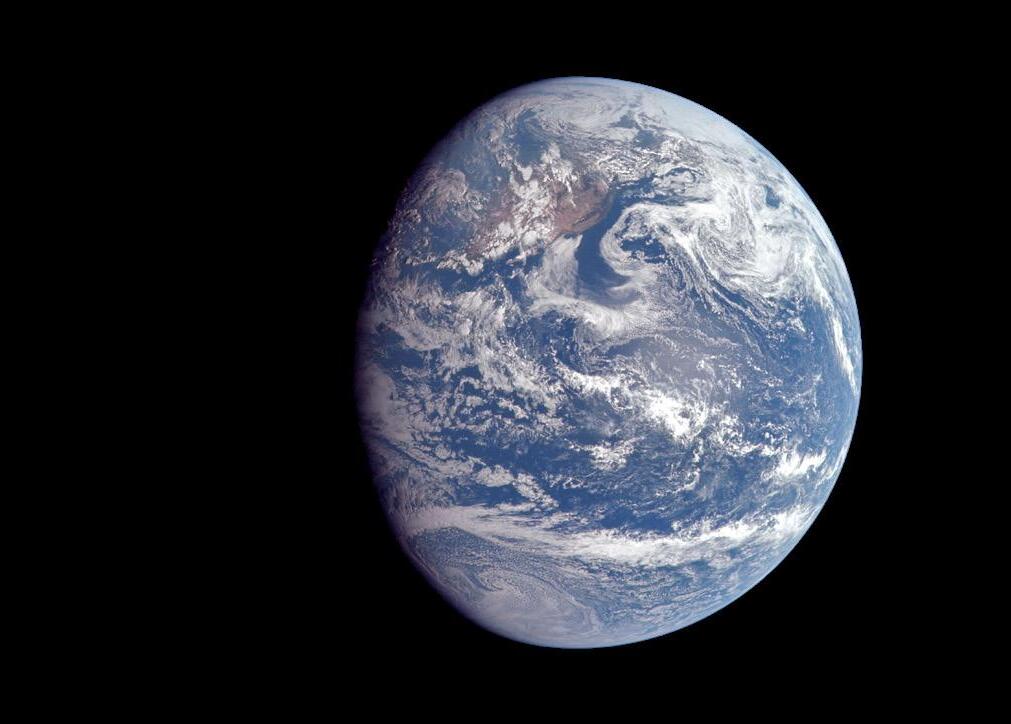
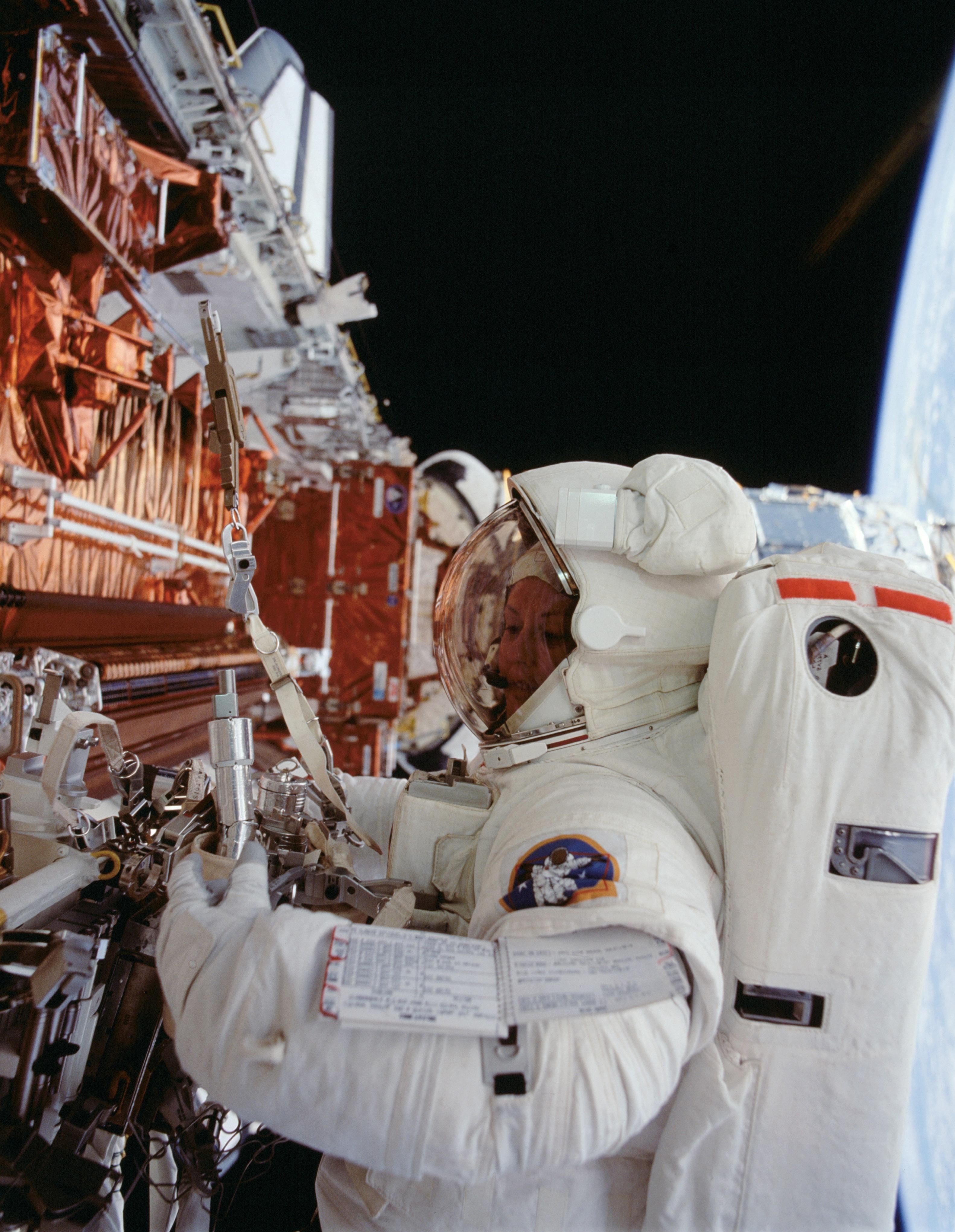 Astronaut Kathryn C. Thornton works with equipment associated with servicing chores on the Hubble Space Telescope during the fourth spacewalk on the 11-day mission. Photo Credit: NASA
Astronaut Kathryn C. Thornton works with equipment associated with servicing chores on the Hubble Space Telescope during the fourth spacewalk on the 11-day mission. Photo Credit: NASA

SPACEJUNKIS POLLUTING
EARTH’SSTRATOSPHERE
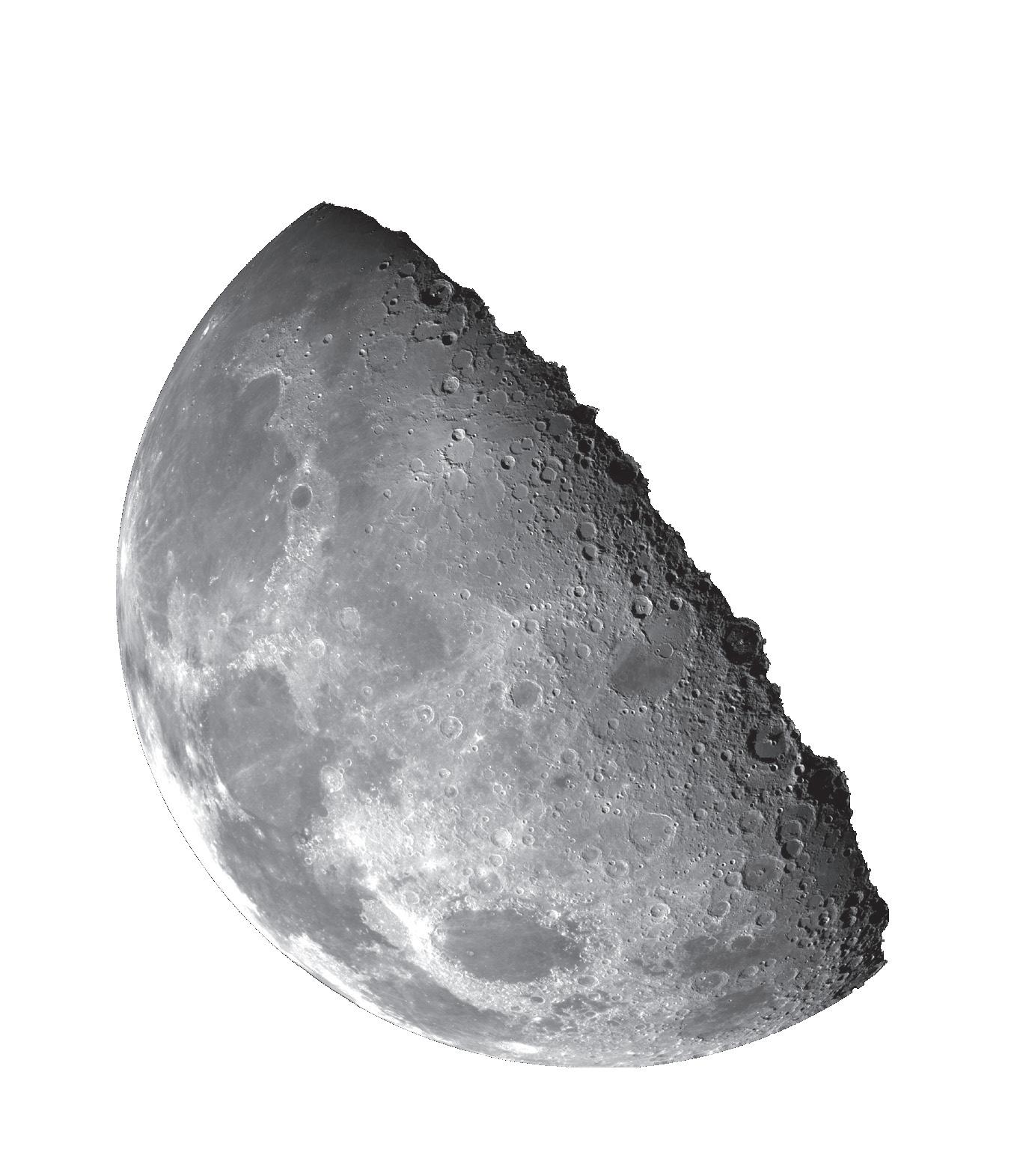
SPACEDEBRISTHROUGHTIME
ASTRONAUTSTAKESHELTER FROMSPACEJUNK
SPACEDEBRIS101
